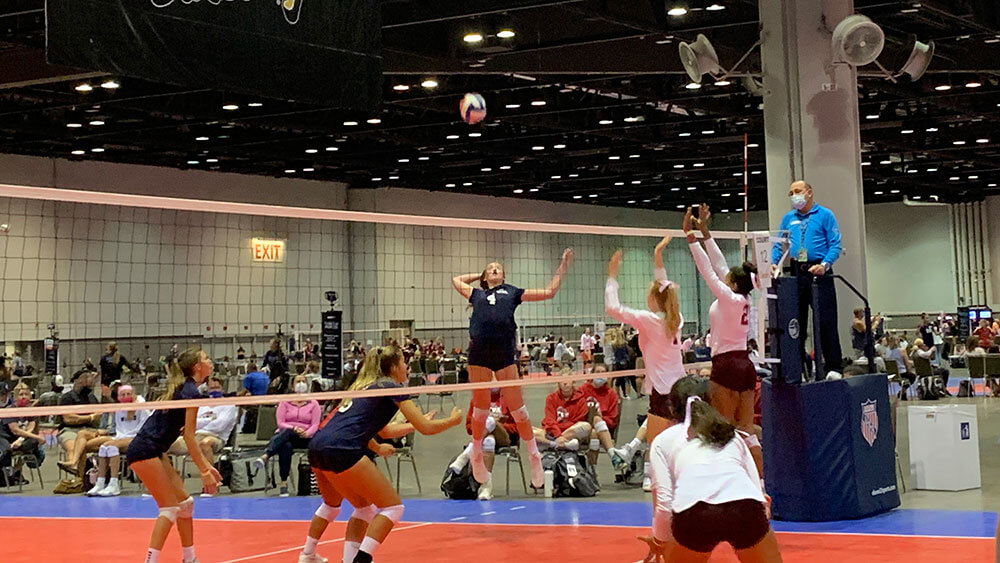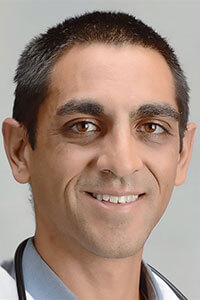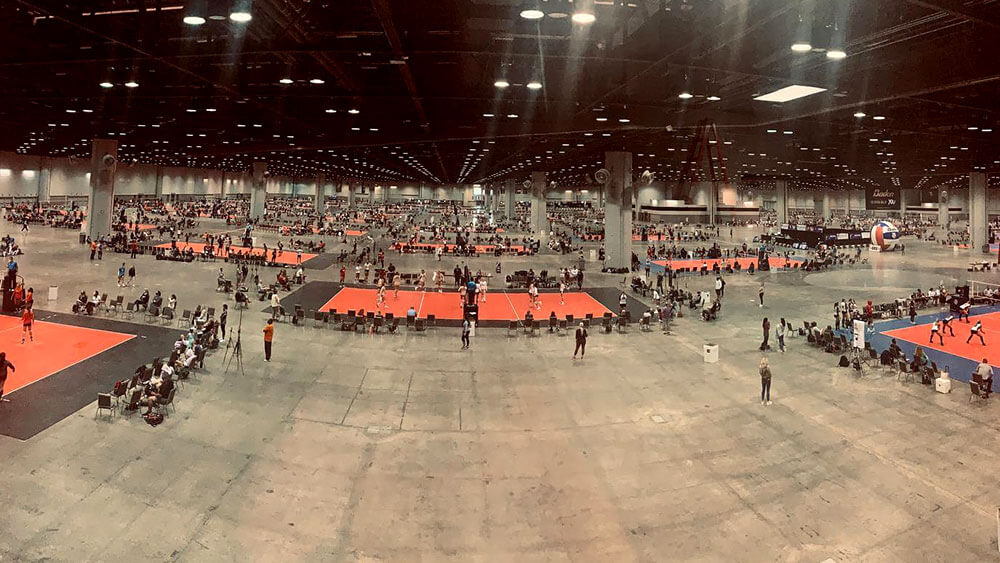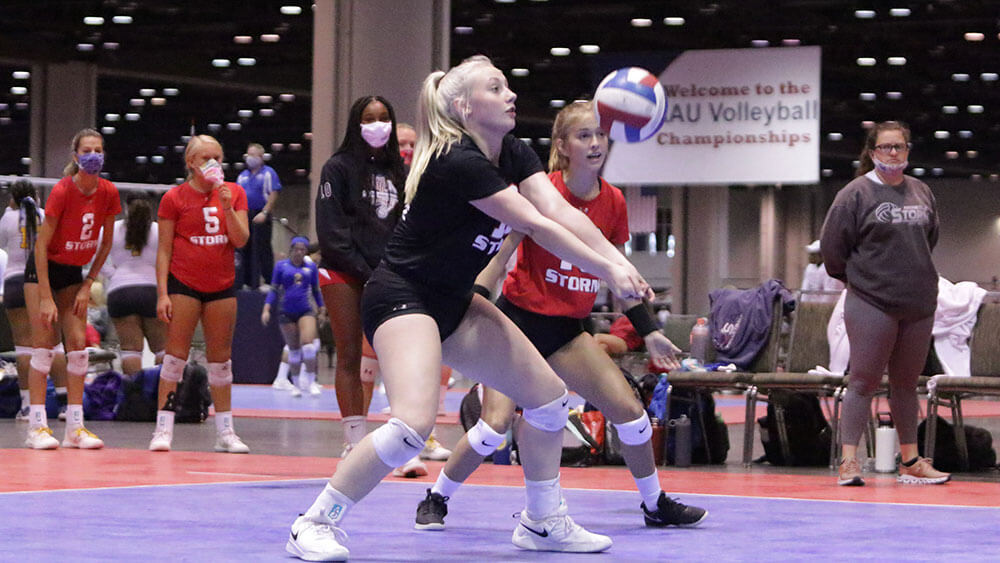
The Orange County Convention Center in Orlando hosted an Amateur Athletic Union youth volleyball tournament in July. (Photos courtesy AAU)
According to the recent Destination Analysts Meetings Research Study, one-third of the 300 meeting and event planners surveyed identified sports groups/organizations as the first group they expect to host live events again. The Amateur Athletic Union (AAU) is proving them correct.

Rishi Desai, M.D., MPH
Earlier this month, Indianapolis hosted the AAU’s Tournament of Champions, a four-day youth basketball tournament that brought 9,000 visitors and $8.1 million in economic impact to the destination. An eight-day volleyball tournament wrapped up on July 22 at the Orange County Convention Center (OCCC) in Orlando. And from July 25 to Aug. 8, the AAU is hosting thousands more at its Junior Olympic Games at numerous venues throughout Florida’s Space Coast, about 50 miles east of Orlando.
Sports associations, CVBs, and event venues are elated to host these events, but public health experts are sounding alarm bells. The largest event, the 47th AAU Junior National Volleyball Championship, saw an estimated 10,000 participants come from 29 states, according to the tournament team rooster and local news reports. The highest percentage of participants traveled from cities throughout Florida — a state where infection count has now topped 400,000. “This is exactly the type of activity that puts athletes and their families and their home communities at risk from COVID-19,” said Rishi Desai, M.D., MPH, a pediatric infectious disease physician with a background in public health, and chief medical officer at Osmosis, an educational platform for health-care practitioners. For all three events, thousands of attendees traveled from other cities and states to participate.
“At this point, Florida is leading the U.S. in new cases, and hospitalizations and deaths are rising,” Desai said. “Curbing this pandemic needs to be the No. 1 priority for that state, and that includes canceling non-essential activities like youth volleyball tournaments.”

Organizers of the AAU volleyball tournament spaced courts out over one million square feet within the OCCC’s North and South Halls.
‘Safety Is the Main Focus’
Both the basketball and volleyball tournaments were held indoors, inside convention centers, where organizers said they were careful to spread out and stagger matches. Organizers of the volleyball tournament whittled down its typical 130-court setup to 66, spreading them out over one million square feet within the OCCC’s North and South Halls where the 326 teams played in waves to mitigate crowding. They also widened the pedestrian areas and spaces around the courts, and designated specific one-way entry and exit points. No spectators were allowed (they could livestream matches via AAU’s website, ballertv.com, instead), and teams were limited to 15 players, five bench personnel, and 10 chaperones. Handshaking, vendors, and communal water stations were nixed as well.
At the Indiana Convention Center, similar measures were put in place. They limited capacity in each exhibit hall to 250 people, and like the volleyball tournament, required anyone who wasn’t actively playing to social distance and wear a mask. Anyone who entered either facility underwent a temperature check and completed a self-performed health assessment — in the volleyball tournament’s case, Orlando Health oversaw these measures. In addition, the facilities said they checked off a long list of increased sanitation measures — the Indiana Convention Center installed a new hospital-grade filtration system, and the OCCC just recently earned the Global Biorisk Advisory Council’s STAR™ accreditation for adhering to a higher standard of cleaning, disinfection, and infectious-disease prevention.
“The safety of everyone at the event is the main focus,” said AGS Expo CEO Darren Green in an e-mailed statement on the 47th AAU Junior National Volleyball Championship in Orlando. “We’re responsible for producing the event, so in order to do it right, we need to ensure all materials are disinfected as they are handled and used over the course of [the event]. We have a dedicated team focused on the latest safety measures recommended by the CDC and are working closely with the OCCC to safeguard the health of attendees, participants, and workers before, during, and even after the event.”
The AAU did not require participants to complete testing prior to or during any of their events, saying that “tests are only appropriate for those demonstrating symptoms or upon advice from a medical professional” in its FAQs. However, Desai remains concerned about the fact that symptomless transmission is a major cause of the pandemic. The tournaments’ participants fall mostly under the age of 18 — a population that is mostly asymptomatic. “Although most children and young adults don’t develop serious symptoms, they can absolutely carry and shed the virus, and that puts all of their families at risk of getting COVID-19,” Desai said.
Medical experts rank contact sports as very high risk due to prolonged close contact, clustering of people, and the amount of forceful exhalation the activity requires. And even though volleyball may qualify closer to a low- or no-contact sport than a high-contact sport like basketball, the distinction may be of less importance due to the fact that the ball is constantly touched by both teams during play as well as the way the virus spreads. “The virus moves from one person’s lungs to another through heavy breathing, talking, yelling, singing, sneezing, and coughing — to name a few,” Desai said. “Any time children and young adults are around one another in close proximity, it gives the virus a chance to move from one person to another.”

Some players (left) wear masks while cheering on their teammates at the AAU tournament.
Who Makes the Call?
Beyond the much-needed economic impact — reports say the volleyball tournament brought more than $15 million to the local Orlando economy — supporters of these sporting events are quick to point out the importance of competitive play to youths’ overall well-being. That includes Terry Lambert, a volleyball coach who Tweeted in support of the event — “it isn’t 100 percent to prevent COVID, but they did take proper precautions and best practices,” he said. Many other parents and coaches expressed similar feelings on social media, one parent using the hashtag, #letthemplay.
CDC guidelines for youth sports currently say that “full competition between teams from different geographic areas” ranks as the highest risk type of setting. But it also directs administrators of youth sports organizations to consult with state and local health officials for further guidance. In places where regulations are the least restrictive, this can shift the call to organizers and venues.
Florida Gov. Ron DeSantis lifted restrictions on youth sports and recreation in May. In Indiana, currently in stage 4.5, organizers must submit a plan to the local health department for gatherings upward of 250 people. In a press release, Visit Indy said that the Tournament of Champions operated under strict guidelines set by the city and state, and that organizers worked with the City of Indianapolis and the Marion County Public Health Department to implement them.
“While our main focus was to provide a safe place to play for those who were ready to do so, we also saw this as an opportunity to help kick-start our industry in general and show how to keep people safe while still conducting business,” said Amanda Ewing, director of event operations for the basketball tournament. “The health of the events industry is directly tied to the health of the economy in all major cities. Our industry is very far reaching and it’s necessary to find a safe way to get back to work, so that those employed by hotels, restaurants and airlines can get back to work as well.”
“Every step we take back toward normality has a risk and benefit associated with it,” Zachary O. Binney, Ph.D., MPH, an epidemiologist at Atlanta, Georgia’s Oxford College of Emory University, told Convene. “We never closed grocery stores… where there is a risk — but the benefit outweighed that [because] we got food. But why do we need a national youth sports tournament right now? To get events like this back, including my own professional conventions that I miss going to, there is no shortcut. We have to have the virus under control.”
The AAU did not respond to requests for further comment.
